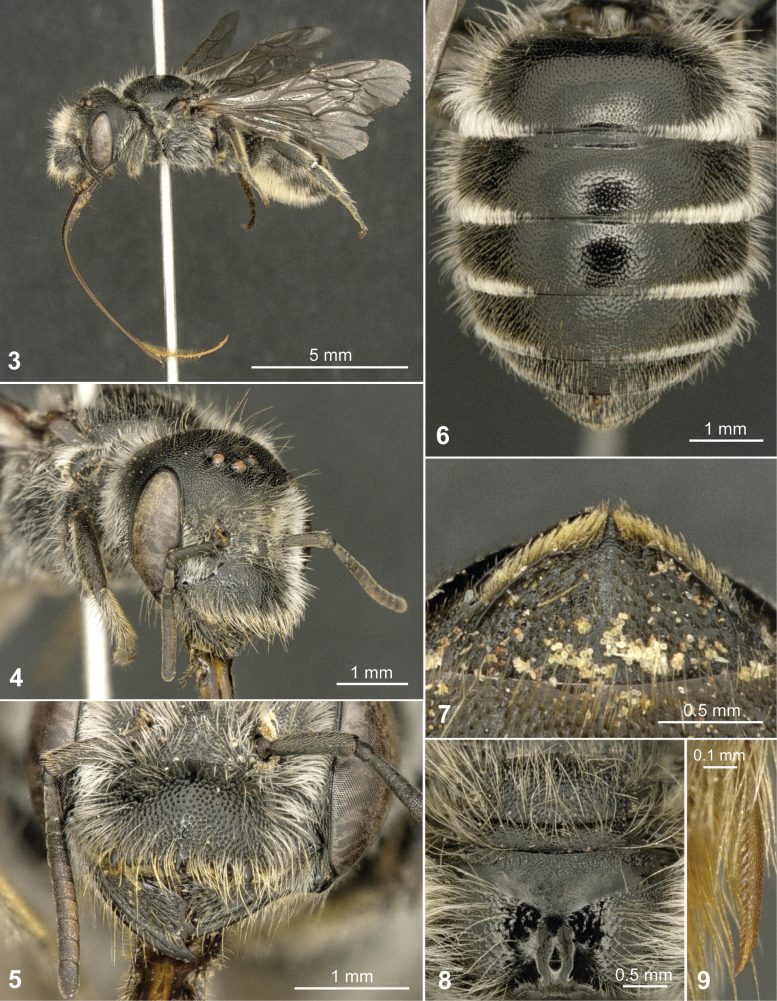
Hoplitis onosmaevae sp. nov., female (holotype). 3. Lateral view; 4. Head; 5. Clypeus and mandibles; 6. Metasoma, dorsal view; 7. Last sternum, ventral view; 8. Propodeum; 9. Inner spur of hind tibia, posterior view. Credit: Aubert et al.
A new bee species, Hoplitis onosmaevae, discovered in the French Alps and parts of Turkey and Iraq, exhibits unique ecological adaptations and faces conservation challenges due to its highly specialized habitat requirements.
A team of European researchers has discovered a new species of osmiine bee with an unusual geographic distribution.
Hoplitis onosmaevae is currently found exclusively in the Mercantour National Park in the French Alps and disparate mountainous regions in Turkey and Northern Iraq. The distance of more than 2000 km between these areas highlights a significant biogeographic disjunction.
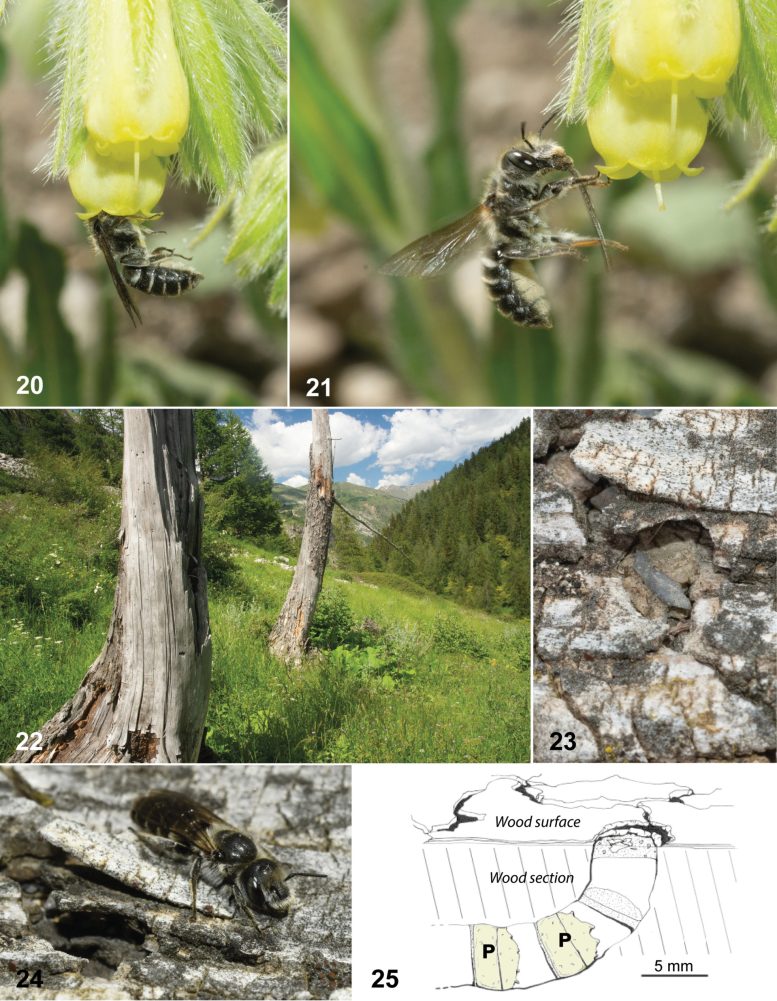
Hoplitis onosmaevae, nesting habitat and behavior (France, Saint-Dalmas-le-Selvage, 23.6.2020, for photographs). 20. Female in buzzing position on a flower of Onosma tricerosperma subsp. fastigiata; 21. Female leaving a flower of Onosma tricerosperma subsp. fastigiata; 22. Nesting habitat with dead trunks of larch; 23. Nest entrance plugged with sand and pebbles; 24. Female near the nest entrance, which is visible at the bottom left; 25. Cross-section of nest (P = pollen provisions). Credit: Aubert et al.
Described in the open-access journal Alpine Entomology, the new bee species demonstrates unique ecological characteristics such as its distinct nesting behaviour in dead wood. Presumed to only harvest pollen from Onosma species, it has a long proboscis, which is likely an adaptation to collect nectar from the long-tubed flowers of this genus.
The strongly disjunct distribution of Hoplitis onosmaevae has important implications for conservation. The species likely has a very narrow ecological niche, making it highly susceptible to future changes in its habitats, for example, due to changes in agricultural practices or to climate change.
“The consideration of the few known populations of this species in France is very important in the conservation field,” says lead author Matthieu Aubert, freelance entomologist and member of the Observatoire des Abeilles association. “This study highlights the incredible diversity of wild bees and that we still have a lot to learn from our environment, even in western Europe,” he continues.
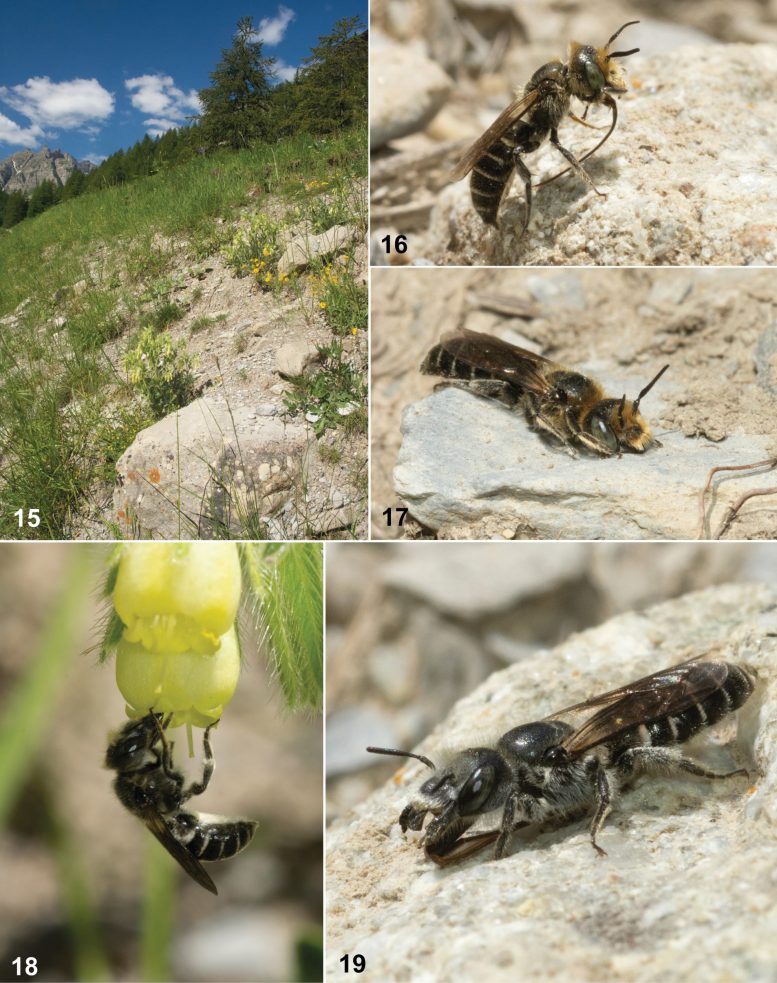
Hoplitis onosmaevae sp. nov., foraging habitat and behaviour (France, Saint-Dalmas-le-Selvage, 23.6.2020). 15. Foraging habitat with patch of the host plant, Onosma tricerosperma subsp. fastigiata; 16. Male resting on stone between two patrolling flights, with unfolded proboscis; 17. Male resting on stone between two patrolling flights; 18. Female on a flower of Onosma tricerosperma subsp. fastigiata; 19. Female concentrating nectar with widely open mandibles. Credit: Aubert et al.
The researchers emphasize the need for detailed conservation plans in the southwestern Alps to ensure the survival of Hoplitis onosmaevae, considering its highly specialized ecological niche and consequently its vulnerability to habitat changes. Their proposals for initial conservation steps can be found in the full research paper.
Reference: “A new osmiine bee with a spectacular geographic disjunction: Hoplitis (Hoplitis) onosmaevae sp. nov. (Hymenoptera, Anthophila, Megachilidae)” by Matthieu Aubert, Andreas Müller and Christophe Praz, 20 March 2024, Alpine Entomology.
DOI: 10.3897/alpento.8.118039

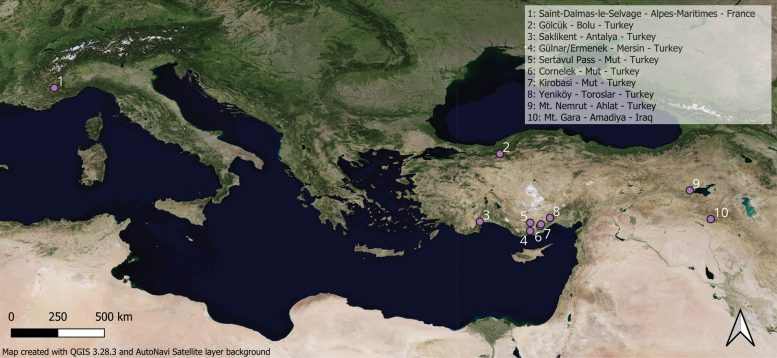





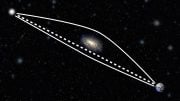


Tklpo